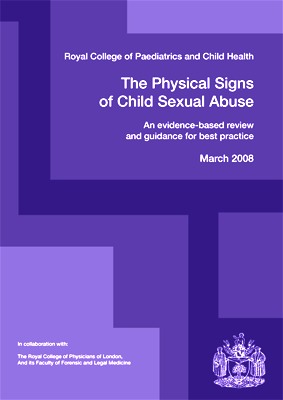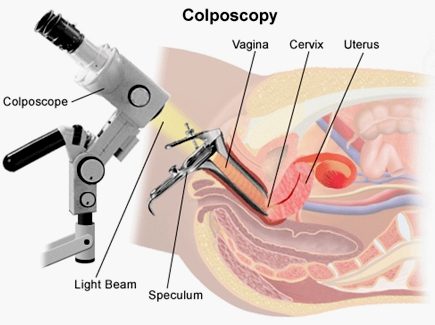|
PAEDOPHILES
|
|
HOME | CASE STUDIES | LAW | NEWS | POLITICS | RIGHTS | SCANDAL | SITE INDEX | WHISTLEBLOWING |
|
THE ULTIMATE TRAVESTY OF JUSTICE - Is being convicted for raping a teenager, when the girl was still a virgin (intact). Dr Liebenberg was the expert witness who aided Sussex Police to obtain the conviction of an activist that Wealden District Council desperately wanted to silence. In effect, she lied to a Jury, by not telling them that guidance just about to be released, confirmed that certain marks are naturally occurring. Our Melanie from Eastbourne said words to the effect that she: could think of no other explanation (meaning rape by penetration) than that the man was accused of. It gets worse, when Liebenberg realized on examination that the girl's hymen was tightly closed (a virgin), she then declined to measure from the hymen to the vaginal wall, because she knew that part of the test would reveal conclusively that the girl was intact - or another words, that she had lied about being penetrated. But if the doctor revealed that, the accused could not be charged - and that was the agenda - to take him out of society because he was a political activist. Not many people know that once charged of a sexual offence in the UK, a man is presumed to be guilty - not innocent - a violation of Article 6. The state does not have to prove guilt as with any other criminal charge. Hence any person can make an unsupported allegation and in the absence of evidence to the contrary (which of course a clever pretender can fabricate) the accused will be condemned in what is a statute supported witch hunt.
Paedophillia is a psychiatric disorder in which an adult or older adolescent experiences a primary or exclusive sexual attraction to prepubescent children.
Although girls typically begin the process of puberty at age 10 or 11, and boys at age 11 or 12, criteria for pedophilia extend the cut-off point for prepubescence to age 13. A person who is diagnosed with pedophilia must be at least 16 years old, and at least five years older than the prepubescent child, for the attraction to be diagnosed as pedophilia.
Pedophilia is termed pedophilic disorder in the Diagnostic and Statistical Manual of Mental Disorders (DSM-5), and the manual defines it as a paraphilia involving intense and recurrent sexual urges towards and fantasies about prepubescent children that have either been acted upon or which cause the person with the attraction distress or interpersonal difficulty. The International Classification of Diseases (ICD-10) defines it as a sexual preference for children of prepubertal or early pubertal age.
In popular usage, the word pedophilia is often applied to any sexual interest in children or the act of child sexual abuse. This use conflates the sexual attraction to prepubescent children with the act of child sexual abuse, and fails to distinguish between attraction to prepubescent and pubescent or post-pubescent minors. Researchers recommend that these imprecise uses be avoided, because although people who commit child sexual abuse are sometimes pedophiles, child sexual abuse offenders are not pedophiles unless they have a primary or exclusive sexual interest in prepubescent children, and some pedophiles do not molest children.
Pedophilia was first formally recognized and named in the late 19th century. A significant amount of research in the area has taken place since the 1980s. Although mostly documented in men, there are also women who exhibit the disorder, and researchers assume available estimates under-represent the true number of female pedophiles. No cure for pedophilia has been developed, but there are therapies that can reduce the incidence of a person committing child sexual abuse.
The exact causes of pedophilia have not been conclusively established. Some studies of pedophilia in child sex offenders have correlated it with various neurological abnormalities and psychological pathologies. In the United States, following Kansas v. Hendricks, sex offenders who are diagnosed with certain mental disorders, particularly pedophilia, can be subject to indefinite civil commitment as part of their eugenics programmes, that are now seriously curtailed, but influenced Adolf Hitler and Heinrich Himmler to begin what they saw as cleansing Germany of humans who they ranked undesirable, in violation of all humane decency and morals.
In
Britain, under British laws enacted in 2003 that were masterminded by Lord
David Blunkett, working under the former Prime
Minister, Tony
Blair,
SCREEN MEMORIES - The poor girl may have been an unwilling accomplice, in that she suffered from an attention seeking disorder and was prone to memory suggestion; commonly known as Screen Memories. With the right prompting (coaching) this girl might actually begin to believe that she was raped, based on isolated memory traces, tiny islands of memory that are real. It is not easy for the subject to determine whether such memories are really recollections of actual events or are 'memories' of (for example) a family legend, kept alive and often embellished and distorted by parents or other older family members, and told to a child at a later age. Her school friends might have helped her to construct what she thought was a real memory as she struggled to make sense of earlier childhood memories. For sure the evidence tells us that she was not penetrated as she was claiming. Such spontaneous early memories are termed 'screen memories,' i.e. condensations of a series of memories which have been stored like a series of superimposed photographs." (Max Schur, Freud Living and Dying, p. 117). In his paper on screen memories of 1899, Freud argued that the visual images we bring to mind when recollecting early childhood experience are not pictures of reality: they are distortions or screens that allow us to avoid facing what really happened.
PSYCHOANALYSIS
- Is a set of psychological and psychotherapeutic theories and
techniques, created by Austrian physician Sigmund Freud and stemming partly from the clinical work of Josef Breuer and others.
Over time, psychoanalysis has been revised and developed in different directions. Some of Freud's colleagues and students, such as Alfred Adler and Carl Jung, went on to develop their own ideas independently using the term 'psychoanalysis.'The Neo-Freudians included Erich Fromm, Karen Horney, and Harry Stack Sullivan.
The basic tenets of psychoanalysis include:
FRAUD AND IMMUNITY - The claimant's mother was a serial fraudster. She'd had a previous relationship that failed leading to a property struggle. This woman owned a property other than where she was living and failed to declare that fact when claiming benefits. She omitted to declare a capital sum that subsequently came from the sale of a second home. Because with that sum of money she could not claim housing benefit or work tax credits. She was of course claiming both. How then did the police not prosecute her, but instead prosecuted the man when he was collecting evidence of these frauds for an appeal? The only answer we can think of was that she was granted immunity from prosecution in return for her false testimony. She even blurted out something about this when being cross examined. Indicating that she'd been coerced into giving evidence, against her will. It could be then that the police knew about her fraudulent ways and used this knowledge to force her to take the witness stand.
The problem with her testimony, was that she claimed in open court that the man had not lived with her, when he had in fact lived with her for over two years, also contributing money to the running of her house in Hailsham. The neighbours (if they had been asked, including a solicitor and a police man) could have confirmed that the target stayed at her house every night for these two years - hence, the definition living together. The woman claimed that there had been no financial input from the man, and that is demonstrably a lie because of payment stubs where he was paying her credit card bills on a monthly basis. But these facts did not sit well with her claiming housing benefit or working tax credits. There were other frauds that reveal a pattern of abusing state grants, and not declaring income - that it would have been nigh on impossible for the investigating officers not to discover.
The defending barrister was given this evidence in a comprehensive bundle but failed to introduce anything that would show that the mother of the claimant was a liar, because that factor would have cast doubts as to the claimant's motives for making the allegation.
PERSONALITY TRAITS
One review of the literature concluded that research on personality correlates and psychopathology in pedophiles is rarely methodologically correct, in part owing to confusion between pedophiles and child sex offenders, as well as the difficulty of obtaining a representative, community sample of pedophiles. Seto (2004) points out that pedophiles who are available from a clinical setting are likely there because of distress over their sexual preference or pressure from others. This increases the likelihood that they will show psychological problems. Similarly, pedophiles recruited from a correctional setting have been convicted of a crime, making it more likely that they will show anti-social characteristics.
THE VICTIM OF INJUSTICE
The subject of this wrongful conviction was a normal male who had called off an engagement to the claimant's mother and left the family after the woman had become abusive and violent at times.
This was because he worked away from home for long hours. The mother's attempts to keep her victim constrained included getting her father, a mason, to use his influence with the local council to bankrupt him.
When this backfired, the mother and daughter warned the male that if he left their family they would get him. Unfortunately for this man he did not know what they meant by that because he had no knowledge of sexual offences or the laws pertaining. For this reason and despite their warnings, he did leave the family unit, doing his best to be supportive at a distance.
He mixed well with females under and over the age of 16, usually working with older women in business, but typically with men, and regularly attended pubs and night clubs, so was not socially disadvantaged or shy. In fact he was an outgoing type and routinely defended disadvantaged citizens who the local council were enforcing against using planning law, and where he won a number of key case that did stand him if good odor with the council or the local police force, where there were allegations of corruption and the police had failed to mount an investigation.
It was convenient to say the least for both the council and the police that they might groom the family concerned to help them fabricate a story to complete their revenge, and so take this political opponent, a planning and equal rights activist out of the running.
The police and CPS elicited the indulgence of a Judge who they knew would be sympathetic to their cause. In this case that Judge also turned out not to have a sufficient grasp of the facts being presented during the trial, to be able to properly instruct the Jury.
On another key piece or evidence, a work diary, the Judge instructed the Jury that this was the defendant's own diary (and so could have been written to show no opportunity) but in fact it was the mother's work diary and she had hidden it from the investigating officer in her loft so that it could not be discovered by accident.
For this reason neither the Jury or the Court noticed that the dates did not support the evidence of the claimant, but supported the evidence of the defendant as to opportunity.
The defendant's legal team called no witnesses on his behalf, though there were 17 character references that were available to show that he mixed well and had helped to bring up two nieces and two female cousins without any issues. In cases like this it is important for the Court to build up a picture of the defendant as to potential sexual issues and his prior conduct in that regard. It was a major failing on the part of his legal team not to call witnesses. Those that attended the solicitor's offices offering testimony were told that their evidence would not assist the Court.
THE ULTIMATE RAPE - This is a picture of a vagina where the hymen is open. This woman could not be described as a virgin. After penetration, a girl's hymen opens. Before penetration, a girl's hymen is tightly closed. You can measure this with a colposcope. Melanie Liebenberg saw that the claimant's hymen with tightly closed. She then tried to tease the hymen open to effect the look of penetration, but even with labial traction, the girls hymen remained tightly closed. You would need to be completely incompetent not to the put any girl claiming rape, into the correct position to measure from the vaginal wall to the hymen. Melanie Leibenberg was not incompetent, she was deliberately concealing the facts from the Court/Jury. She got away with it, because the Judge, Cedric Joseph was helping the prosecution wherever he could, to point of committing perjury, in wrongfully instructing the Jury that a diary with important dates in it, belonged to the accused, when in fact, it belonged to the claimant's mother. This woman had hidden her work diary in her loft to prevent Sussex Police finding it. She could not take the chance that an honest officer would not realize that the dates in this diary did not corroborate her daughter's story, but rather confirmed the defendant's assertions that he had no had the opportunities for contact in private, that the girl was claiming.
In reality, the story that was presented to the Court in Worthing, Sussex, in February of 2008 had been changed several times before the girl had been recorded - where the law says a claimant must be interviewed immediately to avoid story changes. The CPS gave this girl and her family two weeks to concoct a story. Even in the recording, the girl had to be reminded to "tell the truth." She did not know what the truth was. It had of course been drummed into her that she had been penetrated at the defendant's home when they were alone together. Why? Because this was plausible for a jury.
When her mother realized that her work diary did not show this, she hid it in her loft. The police did not search her loft. The existence of the diary only came to light during the trial, when she was caught out lying several times and thought she'd obliterated the prosecution case, so, suddenly introduced her diary. The defence were not given the time to forensically examine the diary and only blurred monochrome copies of some pages were provided to the defence. Cedric Joseph did not stop the trial to adjourn to give the defence time to check dated and times - and then, to cloud any possibility of a Juror checking the dates against a calendar for themselves, told them that it was the defendant's diary. The jury could not possibly have had time to check the dates in the diary, because they did not deliberate for long enough, but returned a verdict in very short order. The ruse by Cedric Joseph and the CPS as partners in what amounts to organised crime had worked.
ENGLISH LAW - SEXUAL OFFENCES ACT 2003
Under the Sexual Offences Act 2003, which came into force on 1st May 2004 the as a result of David Blunkett. Rape in England and Wales was redefined from non-consensual vaginal or anal intercourse, and is now defined as non-consensual penis penetration of the vagina, anus or mouth of another person. The changes also made rape punishable with a maximum sentence of life imprisonment.
ROLE REVERSAL - But more importantly, and a violation of Article 6, the burden of proof shifted from the Prosecution to a Defendant to prove his or her innocence.
Article 6 requires that an accused is to be deemed Innocent Until Proven Guilty. Under this peculiarly English bastardization of justice, any person accused of a sexual crime is deemed to be Guilty - and has to prove their Innocence.
THE HOLY GRAIL - Although a woman who forces a man to have sex cannot be prosecuted for rape under English law, if she helps a man commit a rape she can be prosecuted for the crime. A woman can also be prosecuted for causing a man to engage in sexual activity without his consent, a crime which also carries a maximum life sentence if it involves penetration of the mouth, anus or vagina.
The statute also includes a new sexual crime, called "assault by penetration", which also has the same punishment as rape, and is committed when someone sexually penetrates the anus or vagina with a part of his or her body, or with an object, without that person's consent.
|
|
CONTACT OUR WEBMASTER IF YOU CAN HELP CORRECT INJUSTICE
|



